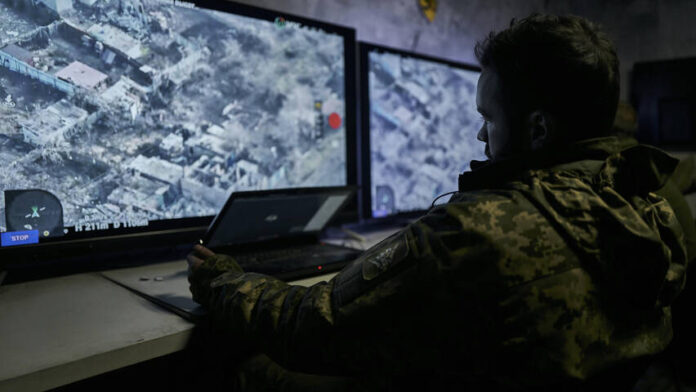A New Economy of Death: Kill Points as Currency in Ukraine
In war-torn Ukraine, where attrition has eroded morale and Western support falters with every Capitol Hill deadlock, Kyiv has quietly unleashed a brutal mechanism to recalibrate battlefield incentives. Called the “Drone Army: Bonus” program, this point-based reward system converts confirmed Russian kills and destroyed materiel into hard currency, points redeemable for cash, equipment, and supplies on a government-controlled military marketplace. A war economy reborn through code and drone footage.
Gone are the days of medals and glory; today, the frontline is managed like an e-commerce dashboard, with kill stats fed directly from battlefield drones to analysts in anonymous Kyiv offices. The goal is clear: optimize Ukraine’s asymmetric advantage in unmanned warfare by marrying tech-savviness with cold military calculus. In this gamified model, soldiers become operators, tanks become targets, and war becomes a marketplace.
How the Drone Kill Points System Works
“If you kill a Russian, you earn a point. If you capture him, you earn ten.” This is not dystopian fiction, but the very real arithmetic guiding Ukraine’s drone-heavy war. According to Mykhailo Fedorov, Minister of Digital Transformation and one of the architects of the program, the goal is efficiency and morale: “We want to measure military efficacy while keeping motivation high.”
The mechanism is straightforward. Drone footage is submitted and reviewed centrally. Verified kills or damages yield points based on strategic value: 50 for a multiple-rocket launcher, 40 for a tank, and lesser amounts for damaged equipment or enemy infantry. The footage, often grisly, sometimes surreal, is both the evidence and the currency. Once verified, units can use their drone kill points on Brave 1 Market, a government-run e-commerce site selling everything from quadcopters to autonomous ground vehicles.
The Amazon of War: Brave 1 Market
At the heart of this system lies the Brave 1 Market, dubbed by insiders as the “Amazon of the battlefield.” Here, soldiers convert their battlefield performance into logistical advantage. Over 1,600 items are on offer, with direct feedback loops and manufacturer reviews built in. The Ministry of Defense foots the bill, bypassing the slow and often corrupt procurement bureaucracy.
And yet, one cannot help but observe the disturbing elegance of it all. War, incentivized like a sales contest. A drone operator who captures footage of a kill isn’t just fulfilling a mission, he’s earning capital. In a world that already blurs the line between simulation and reality, this is gamification stripped of its innocence.
Soldier Reactions: Motivated or Morally Exhausted?
The reactions from the frontline are as varied as they are telling. Some, like Volodymyr from the 108th Territorial Brigade, welcome the system: “It compensates for what we lose. Drones are expensive. This gives us a way to keep fighting.”
Others are more skeptical. A soldier known only as Snake offers a bleaker view: “Kill points won’t stop people from abandoning the army. This doesn’t fix the real motivation problem.”
Perhaps the most damning critique comes from Dymytro, who sees the whole model as a capitalist perversion of war: “We’ve reduced even our deaths to transactions. We compete for points like dogs.”
These reactions mirror a deeper truth: that the battlefield is no longer just a space for survival and sacrifice, it is a data farm. The human cost, as always, is buried beneath efficiency reports and drone feeds.
Strategic Adaptation or Moral Collapse?
From a military standpoint, one cannot deny the logic. With up to 70% of Russian casualties reportedly caused by drones, Ukraine is leaning into its technological edge. Small Russian recon units now hold more value than tanks, shifting the calculus yet again. Capture, not kill, yields maximum utility, dead enemies don’t trade hands in prisoner swaps.
But the larger picture is darker. This is not just a creative response to resource scarcity. It’s the symptom of a West-aligned state forced to crowdsource its war effort while the arsenal of democracy dithers. It’s also a haunting portrait of modern warfare, silent, precise, efficient, and deeply dehumanized.
The West, particularly the U.S., lauds Ukraine’s “innovation.” But what is truly being celebrated? Ingenuit, or the willingness to reconfigure morality to fit budget lines and bandwidth?
Conclusion: War as Interface
In Ukraine, the war is no longer just fought with rifles and artillery, it’s fought with databases, livestreams, and algorithms. The drone kill points system is emblematic of a conflict that has fused Silicon Valley logic with Soviet-scale brutality. It is a model born of desperation and brilliance, and it raises questions no polite think tank dares to ask.
Because when war becomes a leaderboard, who are the players, and who becomes the loot?



